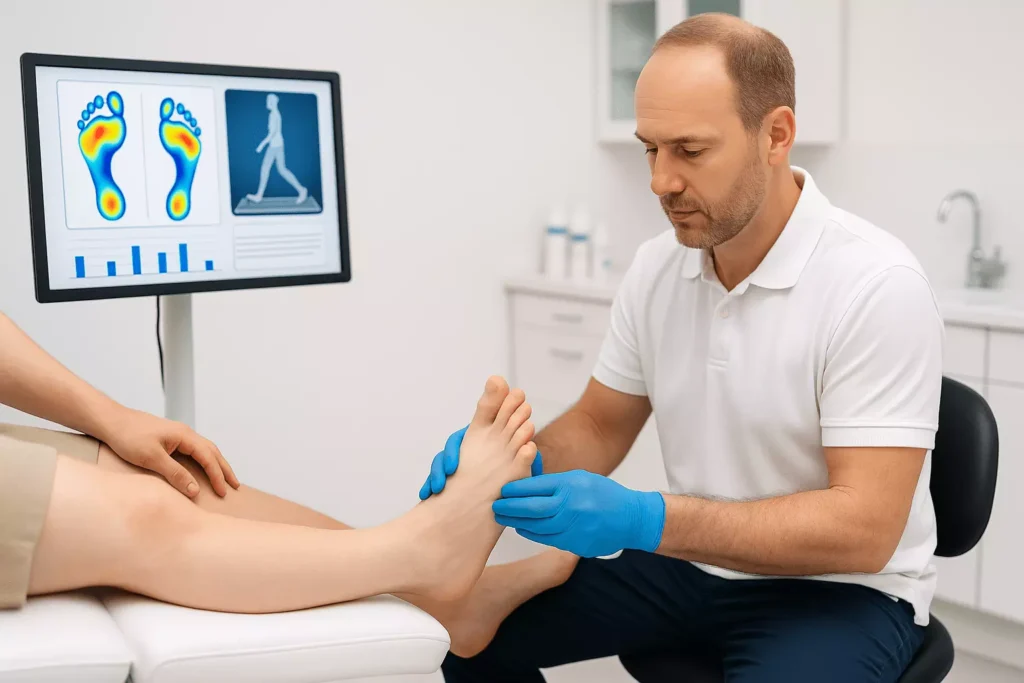Diabetes affects millions of Americans and can lead to serious complications throughout the body. The feet are particularly vulnerable to diabetes-related problems, making specialized care necessary. Understanding podiatric medicine and diabetic foot care can help prevent complications and maintain mobility.
What Is Podiatric Medicine?
Podiatric medicine is a specialized branch of healthcare that focuses on the prevention, diagnosis, and treatment of disorders affecting the foot and ankle. Podiatrists possess the knowledge and skills to address both simple and complex foot conditions. They perform surgery and prescribe medications to manage conditions that affect foot health.
What Are the Available Services?
Podiatric practices offer a wide range of services tailored to meet the diverse needs of patients. Routine foot care includes trimming nails, removing calluses, and maintaining skin care. These services are particularly beneficial for patients who are unable to perform these tasks safely on their own.
Diagnostic services include X-rays, ultrasounds, and other imaging studies to identify structural problems or injuries. Podiatrists provide custom orthotics and shoe recommendations to address biomechanical issues. Wound care represents another key service area. Podiatrists specialize in treating chronic wounds, ulcers, and infections that commonly affect the feet, utilizing advanced wound care techniques.
What Is Diabetes?
Diabetes is a chronic medical condition characterized by elevated blood glucose levels. Type 1 diabetes occurs when the body cannot produce insulin, while Type 2 diabetes develops when the body cannot effectively use insulin or doesn’t produce enough. Both types have the potential to lead to serious complications if not properly managed.
The condition affects approximately 37.3 million Americans, with millions more having prediabetes. Diabetes may damage blood vessels and nerves throughout the body. This damage particularly affects the extremities, making the feet especially vulnerable to complications.
How Does It Affect the Feet?
Diabetes affects the feet through two primary mechanisms: neuropathy and vascular disease. Diabetic neuropathy causes nerve damage that reduces sensation in the feet. This loss of feeling means that injuries, cuts, or pressure sores may go unnoticed until they become serious problems.
Vascular complications reduce blood flow to the feet. Poor circulation slows down healing and increases the likelihood of infections developing. The combination of reduced sensation and poor circulation creates a situation in which minor injuries can progress to serious complications.
High blood glucose levels also impact the immune system, making it more difficult for the body to fight infections. Skin changes associated with diabetes may lead to dryness and cracking, creating entry points for bacteria that can cause infections. These factors combine to make foot problems more common and more serious in people with diabetes.
What Does Diabetic Foot Care Involve?
Diabetic foot care begins with regular professional examinations. Podiatrists perform comprehensive foot exams to detect signs of neuropathy, circulation issues, and structural abnormalities. Daily self-care forms the foundation of diabetic foot care. Patients learn to inspect their feet for cuts, blisters, swelling, or changes in color.
Nail care requires special attention in patients with diabetes. Professional nail trimming reduces the risk of ingrown nails and injuries, while moisturizing helps prevent dry, cracked skin that can become infected. Professional wound care becomes necessary when problems develop. Podiatrists use specialized techniques to treat ulcers and infections.
Keep Your Feet Healthy
Diabetic foot care represents an integral aspect of diabetes management that can prevent serious complications. Regular podiatric care, combined with daily self-care practices, helps maintain foot health and mobility. Taking proactive steps to care for your feet helps prevent minor problems from developing into major complications. Schedule regular appointments with a podiatrist and establish a daily foot care routine now.
